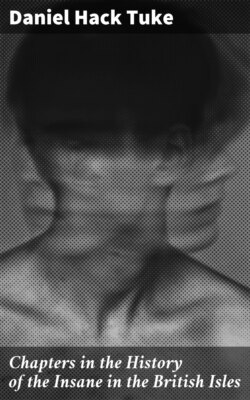Читать книгу Chapters in the History of the Insane in the British Isles - Daniel Hack Tuke - Страница 3
На сайте Литреса книга снята с продажи.
PREFACE.
ОглавлениеTable of Contents
[Skip to Contents]
I think it was Pascal who said that the last thing an author does in making a book is to discover what to put at the beginning. This discovery is easily made in the present instance.
I wish to state that the range of this book, as its title implies, is mainly restricted to the salient points of the historical sketch it attempts to pourtray. To have written a complete History of the Insane in the British Isles would have necessitated the narration of details uninteresting to the general reader. Hence, as the periods and the institutions of greatest importance have alone been brought into prominence, others have been inevitably thrown into the shade. Thus Bethlem Hospital has occupied much space as the centre around which gathers a large amount of historic interest, having been with our forefathers almost the only representative for many centuries of the attempt to provide for the insane in England—the outward symbol of nearly all they knew on the subject. To the Retreat at York, again, considerable attention has been devoted in this history, as the cradle of reform which made the year 1792 the date of the new departure in the treatment of the unhappy class, on whose behalf the various charitable and national acts recorded in this volume have been performed.
Lincoln and Hanwell also, which in the course of time were the scenes of redoubled efforts to ameliorate the condition of the insane, have received in these pages a large, but certainly not too large, measure of praise; and the writer would have been glad could he have conveniently found space for a fuller description of the good work done at the latter establishment.[1]
Of no other malady would the history of the victims demand so constant a reference to legislation. In the chapter devoted to it, the Earl of Shaftesbury has formed the central figure, honourably distinguished, as have been several other members of the legislature in the same cause, both before and after the year 1828, when as Lord Ashley he seconded Mr. Gordon's Bill, and first came publicly forward in support of measures designed to advance the interests of the insane. A laborious and sometimes fruitless examination of Hansard from the earliest period of lunacy legislation, has been necessary in order to present a continuous narrative of the successive steps by which so great a success has been achieved.
No one knows so well as the historian of an important and extended movement like this, the deficiencies by which its recital is marred, but I trust that I have at least succeeded in supplying a want which some have long felt, in placing before the British reader the main outlines of a history with which every friend of humanity ought to be acquainted. Its interest, I need hardly urge, extends far beyond the pale of the medical profession, and no one who has reason to desire for friend or relative the kindly care or the skilful treatment required for a disordered mind, can do otherwise than wish gratefully to recognize those who, during well-nigh a century, have laboured to make this care and this treatment what they are at the present day.
In conclusion, it remains for me to express my obligations to those who have in various ways rendered me assistance in the prosecution of this work. In addition to acknowledgments made in the following pages, I have pleasure in thanking Dr. McDowall, of Morpeth, for the use of manuscript notes of works bearing on the first chapter; as also Mr. S. Langley. I have to thank Mr. Coote, of the Map Department at the British Museum, and Mr. F. Ross, for help in preparing the chapter on Bethlem Hospital; also Dr. W. A. F. Browne of Dumfries, and Dr. Clouston of the Edinburgh Royal Asylum, for valuable information utilized in the chapter on the history of the insane in Scotland. Lastly, in the preparation of this, as of other works, I am greatly indebted to the ever-willingly rendered assistance of Mr. R. Garnett, of the British Museum Reading Room.
4, Charlotte Street,
Bedford Square,
June 12, 1882.
